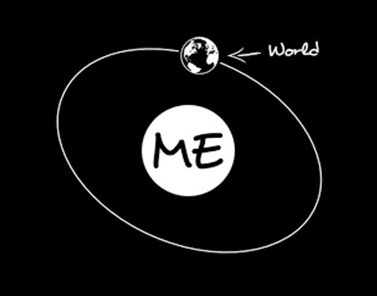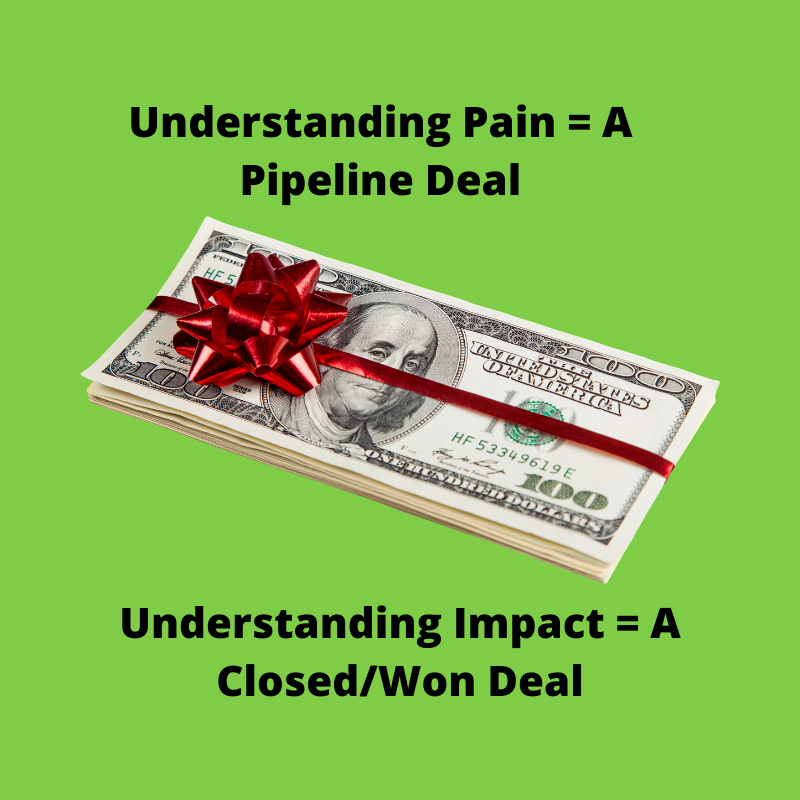
Blog
 Does this sound familiar? “We’ll need to talk internally, and then we’ll get back to you.”
Does this sound familiar? “We’ll need to talk internally, and then we’ll get back to you.”
Let me guess, you hear this right after you’ve finished your software demo and are trying to schedule another call. Am I right?
Keeping deals flowing through the pipeline is critical for you to hit quota and for your company to realize its revenue goals. However, preventing deals from stalling out and prospects from disappearing isn’t easy.
Too often, the prospect takes control of the sales process, and all communication ends up being on their terms, making it easier for them to procrastinate or opt-out of the deal completely.
To prevent this from happening, you need to know how to keep control of YOUR sales cycle and how to determine when it’s time to walk away.
Read more: Stop Letting the Prospect Control YOUR Sales Cycle
 Co-Written with Rachel Epstein
Co-Written with Rachel Epstein
Salespeople often don't enjoy following imposed rules around selling. And we get it - it can seem more like a burden than a benefit. But companies without a formalized and documented sales process are more likely to have underperforming reps who generate less revenue.
 We’ve had a lot of turbulence in the last three years. The pandemic, the Great Resignation, and most recently the war in Ukraine which has pushed the price of oil and gas to an all-time high. All this turmoil has increased prices of just about every consumer good and I’m now seeing an impact on business spending because of talk about a looming recession. The result for your sales team and the reps you manage is that companies are or will be delaying purchases or reducing spending in general until they better understand the economic impact of all these events on the next few months or years. This will make it harder to hit quota and get to OTE (on target earnings). So, the time to act is NOW.
We’ve had a lot of turbulence in the last three years. The pandemic, the Great Resignation, and most recently the war in Ukraine which has pushed the price of oil and gas to an all-time high. All this turmoil has increased prices of just about every consumer good and I’m now seeing an impact on business spending because of talk about a looming recession. The result for your sales team and the reps you manage is that companies are or will be delaying purchases or reducing spending in general until they better understand the economic impact of all these events on the next few months or years. This will make it harder to hit quota and get to OTE (on target earnings). So, the time to act is NOW.
We need to be preparing our reps for the next 7 month and make sure they can control what they can control…..the pipeline. Even though there’s inflation happening globally, a full-blown recession isn’t here yet. It is going to be easier for your sales team, that made ambitious 2022 sales goals in Q4, to achieve if not all, then decent percentage of those goals this year by overfilling the pipeline now.
For most of the startups I worked with, this is the first economic challenge they've faced so I’m helping them understand that when a recession starts, like in so many before, a lot of projects will be paused, and it will be much more difficult to put warm leads into your pipeline. So, let’s talk about actions you and your team can take now to try and mitigate any loss of revenue by filling the funnel.
 "My 2nd favorite word is No!" That's what my former employee James was famous for saying. It's great when your prospect does you the favor of saying no, but most times their actions and words will sound more like, maybe. That puts the pressure on you to decide when a maybe is really a no. The trick is to be confident about when to pull the plug on a prospect and move 'em out. If you're not making forward progress with each call, email, or meeting then you need to stop and ask yourself, what are the chances this will close? Your confidence might wain at any time during the sales cycle from a cold outreach conversation to after you've sent a contract with Ts and Cs. You need to be able to identify the red flags that might pop up along the way and then take appropriate action to get the deal back on track or decide it's time to move on.
"My 2nd favorite word is No!" That's what my former employee James was famous for saying. It's great when your prospect does you the favor of saying no, but most times their actions and words will sound more like, maybe. That puts the pressure on you to decide when a maybe is really a no. The trick is to be confident about when to pull the plug on a prospect and move 'em out. If you're not making forward progress with each call, email, or meeting then you need to stop and ask yourself, what are the chances this will close? Your confidence might wain at any time during the sales cycle from a cold outreach conversation to after you've sent a contract with Ts and Cs. You need to be able to identify the red flags that might pop up along the way and then take appropriate action to get the deal back on track or decide it's time to move on.
 Visualize a stack of 8 1/2 x 11-inch paper 4 inches tall. This is what I think of when I begin to reach out to a group of "suspects" to see if I can turn them into a prospect. My goal with this stack of suspects is to move them from the 4-inch suspect pile into 2 smaller piles - the yes pile or no prospect pile.
Visualize a stack of 8 1/2 x 11-inch paper 4 inches tall. This is what I think of when I begin to reach out to a group of "suspects" to see if I can turn them into a prospect. My goal with this stack of suspects is to move them from the 4-inch suspect pile into 2 smaller piles - the yes pile or no prospect pile.
When you begin to outbound prospect, I say that everyone is a suspect and I refer to your prospecting list as the "maybe pile." Maybe they are a fit. Maybe they will be interested in what you sell. Maybe they will even buy. But at this point those are all unknowns, and they are just a suspect, not yet a prospect. It's your job to play amateur detective and uncover clues to help you determine if they are masquerading as a suspect but are really a prospect in disguise.
 No one likes a selfish person, but that’s how a lot of sellers come across.
No one likes a selfish person, but that’s how a lot of sellers come across.
I tell sales reps and sales leaders daily:
“It has to be all about them before it can be all about you before it can be all about us.”
So why am I still getting emails, LI messages, and phone calls from marketing departments and sales reps only talking about the features of their product or service and not about how their product/service would help me increase revenue, reduce costs, or just make my life easier?
Let’s talk about how we can let a prospect know that’s it’s all about them.
 Objections are born out of fear. Fear the prospect will spend money on something they won’t use or get value from, fear that they will look bad if it doesn’t go well, fear that others in the company won’t be open to switching vendors or spending money on some new strategy or vendor.
Objections are born out of fear. Fear the prospect will spend money on something they won’t use or get value from, fear that they will look bad if it doesn’t go well, fear that others in the company won’t be open to switching vendors or spending money on some new strategy or vendor.
The best way to deal with that fear is to better understand it and get to the root cause of that fear. So put your therapist hat on and let’s go to work.
I teach my clients that you handle objections by asking questions. I call this peeling back the onion. You need to get through all the layers to figure out what’s really at the core of the fear.

These are new and unusual times. Overnight we went from a country with the Dow over 29,000, an unemployment rate under 3% and most companies seeing very healthy YoY growth rates. Now we are facing a very different reality. I believe those who are adaptable, innovative, resilient, and understand we’ll need to “SELL” our way out of this will have the best chance of coming out ahead in the next few weeks. That includes the need to prospect and filling the top of the funnel to ensure there will be revenue (and commission) in the months to come.
Here are some tips to help you be more comfortable reaching out to prospects during this unusual time.
 By now I'm sure your sales team is good at uncovering the pain points and challenges your prospects face. But are they digging to get the negative financial impact those pain points are having on the prospect’s organization? Are they able to calculate what the cost to the company is for not solving the issue? Are they able to calculate the positive revenue or negative cost impact that purchasing your product or service can have on their business and bottom line? Finding pain puts the prospect in the pipeline, understanding impact leads to more closed/won deals.
By now I'm sure your sales team is good at uncovering the pain points and challenges your prospects face. But are they digging to get the negative financial impact those pain points are having on the prospect’s organization? Are they able to calculate what the cost to the company is for not solving the issue? Are they able to calculate the positive revenue or negative cost impact that purchasing your product or service can have on their business and bottom line? Finding pain puts the prospect in the pipeline, understanding impact leads to more closed/won deals.
Read more: Understanding the Impact of your Prospect's Pain is What Will Close More Deals

There has been so much written about the Millennials that I’m afraid we aren’t getting ready for Gen Z. They have hit the workforce and although probably not decision makers yet, they are individual contributors and their opinion matters. They don’t know a world without smartphones and technology. They are used to connecting and communicating in less personal ways; text, email, slack and chat.

SDRs and AEs are working hard to personalize their message to prospects. Like the commercial says, “What better way to say I love you than with flowers.” Everyone loves to get something special in the mail.
Video is working!

More and more of my clients are using Vidyard to send prospects and customers customized video messages as part of their outbound prospecting strategies.
I've got to admit, I don't focus very much on Social Selling when I speak to reps. about best practices. It's not that I don't think that it's a tool in the tool box that should be considered and used where appropriate, but I don't grab my pom poms when the topic comes up and shout "Three Cheers for Social Selling". I have been known to say, "No one sells anything over email! You still need to pick up the phone." Well, something happened yesterday that got my attention.

